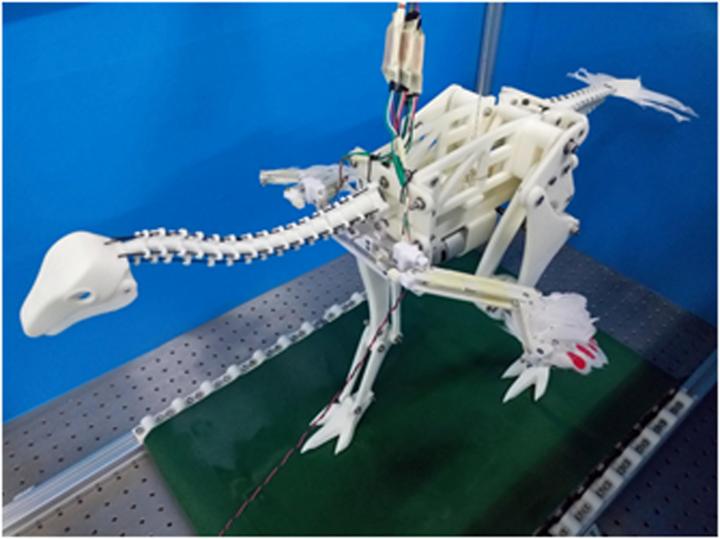New evidence suggests that passive wing flapping may have arisen earlier than gliding flight

Credit: Talori et al.
Before they evolved the ability to fly, two-legged dinosaurs may have begun to flap their wings as a passive effect of running along the ground, according to new research by Jing-Shan Zhao of Tsinghua University, Beijing, and his colleagues.
The findings, published in PLOS Computational Biology, provide new insights into the origin of avian flight, which has been a point of debate since the 1861 discovery of Archaeopteryx. While a gliding type of flight appears to have matured earlier in evolutionary history, increasing evidence suggests that active flapping flight may have arisen without an intermediate gliding phase.
To examine this key point in evolutionary history, Zhao and his colleagues studied Caudipteryx, the most primitive, non-flying dinosaur known to have had feathered “proto-wings.” This bipedal animal would have weighed around 5 kilograms and ran up to 8 meters per second.
First, the researchers used a mathematical approach called modal effective mass theory to analyze the mechanical effects of running on various parts of Caudipteryx‘s body. These calculations revealed that running speeds between about 2.5 to 5.8 meters per second would have created forced vibrations that caused the dinosaur’s wings to flap.
Real-world experiments provided additional support for these calculations. The scientists built a life-size robot of Caudipteryx that could run at different speeds, and confirmed that running caused a flapping motion of the wings. They also fitted a young ostrich with artificial wings and found that running indeed caused the wings to flap, with longer and larger wings providing a greater lift force.
“Our work shows that the motion of flapping feathered wings was developed passively and naturally as the dinosaur ran on the ground,” Zhao says. “Although this flapping motion could not lift the dinosaur into the air at that time, the motion of flapping wings may have developed earlier than gliding.”
Zhao says that the next step for this research is to analyze the lift and thrust of Caudipteryx‘s feathered wings during the passive flapping process.
###
Peer-reviewed / Experimental study / Animals
Videos available at:
https:/
https:/
In your coverage please use this URL to provide access to the freely available article in PLOS Computational Biology:
https:/
Citation: Talori YS, Zhao J-S, Liu Y-F, Lu W-X, Li ZH, O’Connor JK (2019) Identification of avian flapping motion from non-volant winged dinosaurs based on modal effective mass analysis. PLoS Comput Biol 15(5): e1006846. https:/
Funding: This work was supported by the National Natural Science Foundation of China under grant 51575291 (URL: http://www.
Competing Interests: The authors have declared that no competing interests exist.
Media Contact
Jing-Shan Zhao
[email protected]
Related Journal Article
http://dx.




